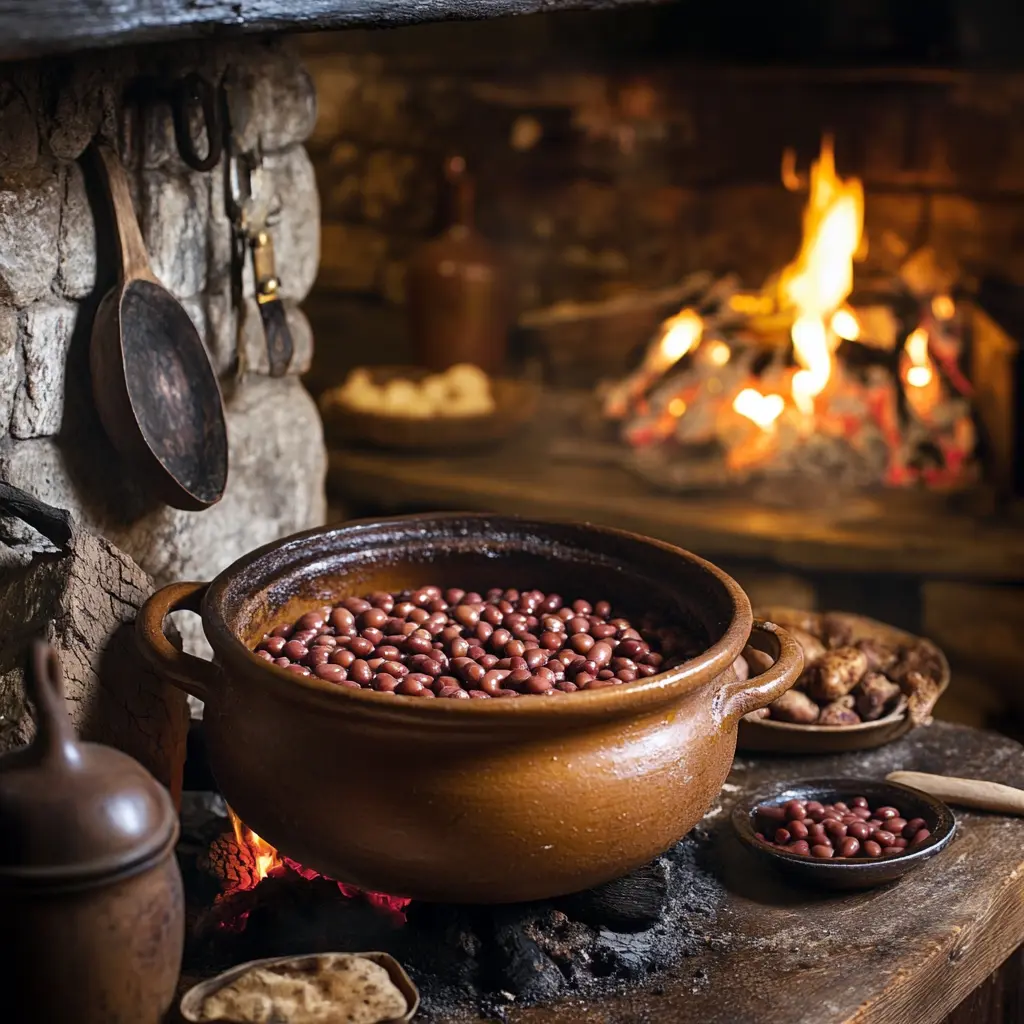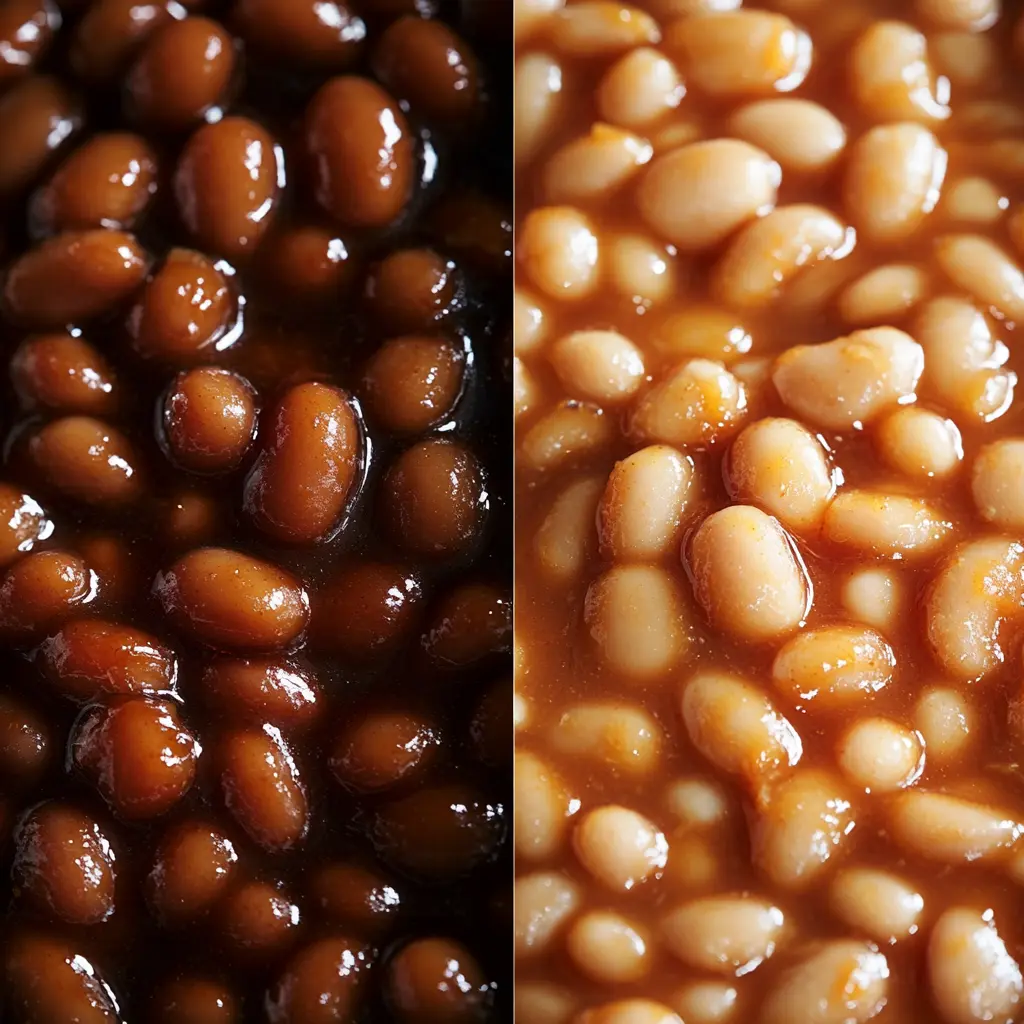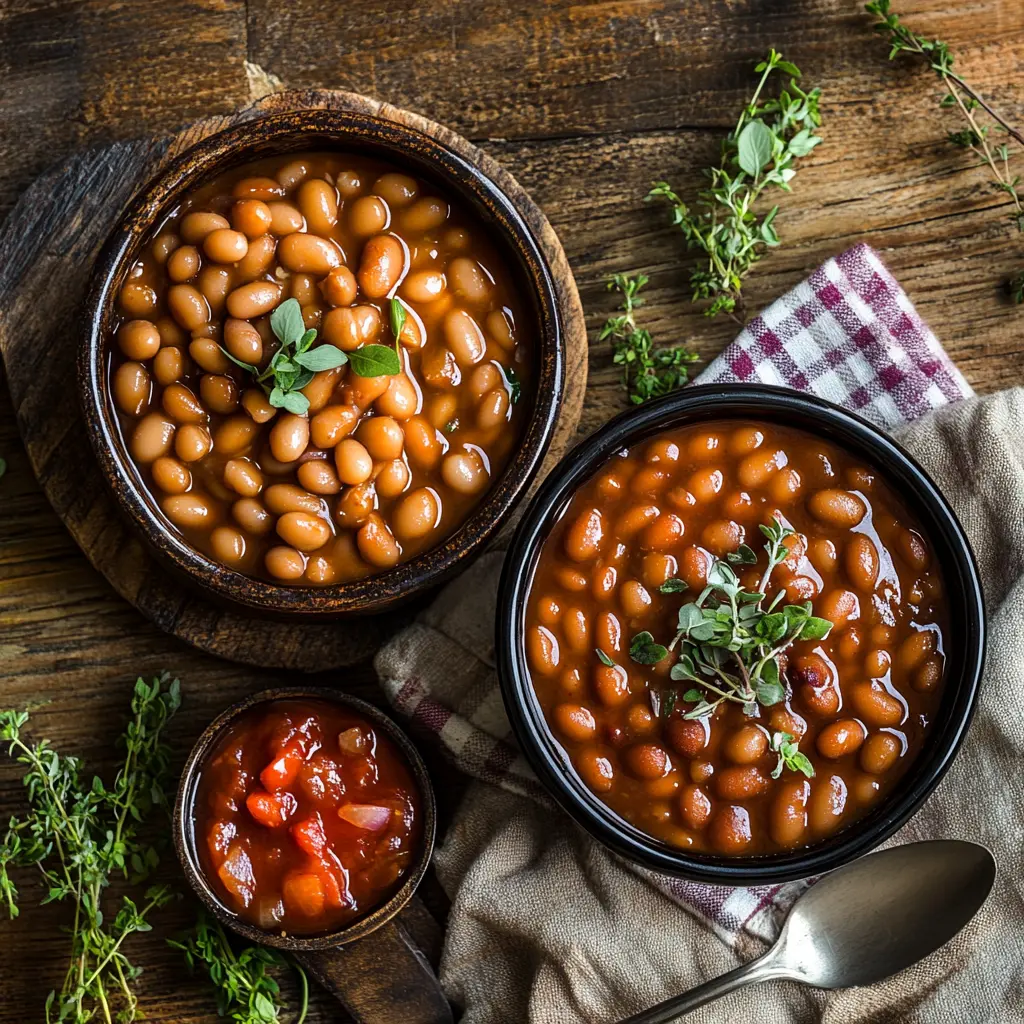Introduction
When it comes to comfort food, baked beans are a timeless classic enjoyed worldwide. But did you know there’s a flavorful debate between Boston baked beans and regular baked beans? While they might appear similar, their ingredients, preparation methods, and even cultural roots tell two very different stories. This article explores the fascinating contrasts, helping you decide which one deserves a spot on your plate.
Part 1: Understanding Baked Beans
1.1 What Are Baked Beans?
Baked beans are more than just beans in a sauce—they’re a dish with a long-standing tradition. Typically made with navy beans or other small varieties, they’re cooked slowly in a flavorful sauce that ranges from sweet to savory. Whether served as a hearty side dish or the main attraction, baked beans have a way of warming the soul.
These beans are known for their versatility. They can be customized to fit different cuisines, diets, and flavor preferences, making them an enduring favorite across households. From backyard barbecues to Sunday dinners, baked beans hold a cherished place in global culinary culture.
1.2 Historical Roots of This Beloved Dish
The history of baked beans traces back to Indigenous peoples in North America. They slow-cooked beans with natural sweeteners like maple syrup to create rich and flavorful meals. European settlers later adopted and adapted these methods, eventually introducing ingredients like molasses, which is central to Boston baked beans.
As baked beans spread across the globe, regional variations emerged. In the UK, for instance, beans are prepared in a tomato-based sauce, often served on toast. These cultural adaptations demonstrate how a simple dish can transform into something uniquely tied to local tastes and traditions.
1.3 Global Takes on Classic Baked Beans
It’s no surprise that baked beans have gone international. In the Caribbean, they might include spicy flavors like thyme or hot peppers, while French cuisine integrates them into hearty stews like cassoulet. Meanwhile, the American South has its own versions, often cooked with sweet or smoky notes.
Despite these regional differences, the love for baked beans is universal. Whether it’s a sweet-and-savory New England favorite or a zesty Caribbean variation, each preparation highlights the creativity of cooking traditions.
Let me know when you’re ready for Part 2!
Part 2: Boston Baked Beans
2.1 A Look at the Origins of Boston Baked Beans
Boston baked beans have a storied past deeply rooted in New England’s history. This dish’s origin can be traced to Indigenous cooking methods, which inspired early settlers to slow-cook beans for hours. With the molasses trade booming in the 18th century, New Englanders began using this sweet syrup to flavor their beans.
The dish gained iconic status in Boston, earning it the nickname “Beantown.” It became a cultural symbol of the region, with recipes handed down through generations, preserving its historical significance.

2.2 Ingredients That Define the Dish
What sets Boston baked beans apart? The answer lies in the ingredients. The beans themselves are usually navy beans, known for their creamy texture. The star of the sauce is molasses, which lends a deep, caramelized sweetness that distinguishes the dish.
Other key players include onions, mustard, and brown sugar. These components create a balance of flavors—sweet, tangy, and savory. While traditional recipes may include salt pork or a similar ingredient, modern adaptations often rely on plant-based alternatives, ensuring the dish suits a variety of diets.
2.3 How Boston Baked Beans Are Cooked
Slow and steady wins the race when it comes to cooking Boston baked beans. Traditionally, they were prepared in clay pots and baked in brick ovens for hours, sometimes overnight. This long cooking process allows the beans to absorb the sauce, resulting in tender, flavorful beans with a rich, sticky coating.
Today, slow cookers or ovens are commonly used to replicate this method. Soaking the beans beforehand ensures even cooking, and the low, slow heat creates a depth of flavor that’s hard to beat. It’s a time-honored process that rewards patience with unparalleled taste.
2.4 The Signature Taste and Texture
Boston baked beans are celebrated for their bold, sweet, and savory flavor profile. The molasses gives them a distinct sweetness, balanced by the tang of mustard and the umami of slow-cooked onions. Every bite is infused with rich, layered flavors.
The texture is just as noteworthy. The beans are tender but retain their shape, coated in a thick, luscious sauce that clings to each bite. This combination of flavor and texture makes Boston baked beans a standout dish that’s as comforting as it is satisfying.
Let me know when you’re ready for Part 3!
Part 3: Regular Baked Beans
3.1 What Goes Into Regular Baked Beans?
Unlike Boston baked beans, regular baked beans feature a more flexible ingredient list, making them a versatile option for different cuisines. The base is often navy beans, but kidney or pinto beans are also common choices. The sauce is typically tomato-based, providing a tangy and slightly sweet flavor.
To enhance the taste, regular baked beans often include onions, garlic, and a mix of spices like paprika, black pepper, or even chili powder. Some recipes add a touch of sweetness with brown sugar or honey, but the tomato sauce remains the star ingredient, setting them apart from the molasses-rich Boston variation.
3.2 Modern Preparation Techniques
Preparing regular baked beans is straightforward and quick, making them a go-to option for busy cooks. If starting from scratch, the beans are soaked overnight and simmered until tender. However, canned beans are a convenient alternative for faster preparation.
The sauce is typically prepared by sautéing onions and garlic, then simmering them with tomatoes, sugar, and seasonings. Once combined, the beans and sauce are either baked or cooked on the stovetop until the flavors meld beautifully. Some prefer using a slow cooker, allowing the dish to develop a deeper, richer taste.
3.3 Comparing the Taste and Consistency
Regular baked beans stand out with their bright and tangy flavor, thanks to the tomato-based sauce. While they can be sweetened slightly, the dominant taste is savory and mildly acidic, making them a perfect accompaniment to grilled or roasted dishes.
In terms of consistency, regular baked beans are slightly softer than their Boston counterparts. The sauce is usually thinner and less sticky, offering a lighter texture that pairs well with a variety of meals. This versatility makes them a popular choice for family dinners and summer cookouts alike.
Let me know when you’re ready for Part 4!
Part 4: Key Comparisons Between the Two
4.1 Distinctive Ingredients of Each Dish
The ingredients of Boston baked beans and regular baked beans set them apart in both flavor and cultural significance. Boston baked beans rely on molasses as their defining ingredient, giving them a rich, caramelized sweetness. Regular baked beans, on the other hand, use a tomato-based sauce, offering a tangy and savory profile.
Additional ingredients also highlight the differences. Boston baked beans often incorporate mustard for a subtle tang, while regular baked beans include a variety of seasonings like paprika or chili powder, making their flavors more adaptable to regional preferences.
4.2 How Cooking Methods Differ
When it comes to preparation, Boston baked beans stick to traditional slow-cooking methods. Historically baked in clay pots, they are cooked for hours to allow the flavors to meld and the sauce to thicken. This process creates a deep, sticky glaze that coats every bean.
Regular baked beans, while they can be slow-cooked, are often prepared using quicker methods. Stovetop cooking or baking in the oven is common, and the addition of canned beans further reduces preparation time. This makes regular baked beans a more convenient option for everyday meals.
4.3 Exploring Flavor and Texture Contrasts
The flavor profiles of these two dishes are as distinct as their preparation. Boston baked beans have a bold sweetness from molasses, balanced by savory and tangy notes from mustard and onions. Their sauce is thick and caramelized, clinging to the beans for a hearty, indulgent bite.
Regular baked beans, in contrast, have a lighter, tangier taste due to the tomato-based sauce. They can range from mildly sweet to spicy, depending on the recipe. The sauce is thinner, making the dish feel less heavy and better suited as a side for a variety of meals.

4.4 Differences in Nutritional Profiles
The nutritional differences between Boston baked beans and regular baked beans mainly come down to their sauces. The molasses in Boston baked beans increases the sugar content, making them slightly higher in calories compared to their tomato-based counterparts. Regular baked beans often have less sugar, though recipes sweetened with honey or brown sugar may vary.
Both dishes are excellent sources of protein and fiber, making them nutritious choices overall. However, if you’re watching your sugar intake, regular baked beans may be the lighter option. Regardless of the choice, both provide a hearty, wholesome addition to any meal.
Let me know if you’re ready for the FAQs!
Frequently Asked Questions (FAQs)
What are Boston baked beans?
Boston baked beans are a traditional dish from New England, made with navy beans slow-cooked in a molasses-based sauce. The rich, caramelized sweetness from the molasses, combined with mustard and spices, makes this dish uniquely flavorful.
How are regular baked beans different from Boston baked beans?
Regular baked beans feature a tomato-based sauce that provides a tangier and lighter flavor compared to the molasses-rich sweetness of Boston baked beans. The ingredients and cooking methods also vary, with regular baked beans often prepared more quickly.
Can you make Boston baked beans without molasses?
Yes, you can substitute molasses with alternatives like maple syrup or brown sugar. However, the signature flavor of Boston baked beans relies heavily on molasses, so substitutions may alter the dish’s taste.
Are Boston baked beans healthier than regular baked beans?
Both are nutritious, offering protein and fiber, but Boston baked beans usually have a higher sugar content due to the molasses-based sauce. Regular baked beans, with their tomato-based sauce, are often the lighter choice, though recipes can vary.
What beans are typically used for baked beans?
Navy beans are the most common variety used for both Boston baked beans and regular baked beans. Their creamy texture and ability to absorb flavors make them ideal for these dishes.
Can I use canned beans to make Boston baked beans?
Yes, canned beans can simplify the process, reducing cooking time significantly. While traditional recipes call for dried beans, canned beans can still absorb the rich flavors of the sauce during slow cooking.
What’s the difference between baked beans and Boston baked beans?
The primary difference is in the sauce. Boston baked beans are made with a molasses-based sauce, offering a rich sweetness, while baked beans often feature a tomato-based sauce that is tangier and more versatile in flavor.
What is the flavor of Boston baked beans?
Boston baked beans have a rich, caramelized sweetness from molasses, complemented by the tanginess of mustard and the umami of slow-cooked onions. The result is a bold, sweet, and savory flavor profile.
What is the coating on Boston baked beans?
The beans are coated in a thick, molasses-based sauce that caramelizes during slow cooking. This glaze creates a luscious texture, making every bite indulgent and flavorful.
Why are Boston baked beans so good?
Boston baked beans are beloved for their perfect balance of sweet and savory flavors, achieved through the combination of molasses, mustard, and spices. The slow-cooking process deepens these flavors, creating a hearty, satisfying dish.
Let me know if you’re ready for the conclusion! 😊
Conclusion
In the culinary world, Boston baked beans and regular baked beans stand out as timeless comfort foods, each offering a unique take on a simple yet hearty dish. Boston baked beans, with their rich molasses glaze and slow-cooked tradition, represent a deep-rooted New England heritage. Regular baked beans, on the other hand, shine with their tomato-based versatility and quick preparation methods, making them a global favorite.
Whether you’re drawn to the caramelized sweetness of Boston baked beans or the tangy, adaptable flavor of regular baked beans, both options are delicious choices that bring warmth and satisfaction to any meal. Next time you reach for a bowl of baked beans, you’ll know the rich history and thoughtful preparation that make these dishes so special.
Enjoy exploring their flavors and textures—you just might discover a new favorite!

